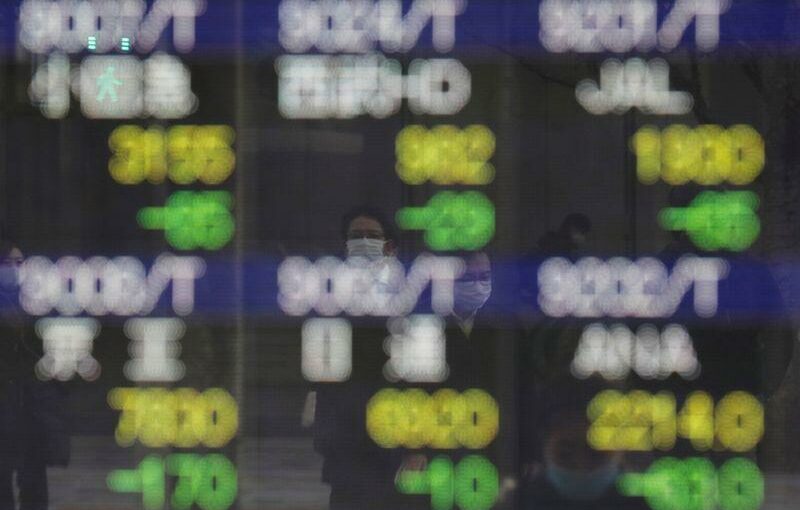SYDNEY (Reuters) -Asian stocks were on track for their first monthly loss since last October though markets were up on Wednesday and the U.S. dollar stood tall as investors focused on growing signs of a sure-footed global economic recovery.
MSCI’s broadest index of Asia-Pacific shares outside of Japan climbed for a fourth consecutive day to a one-week high of 682.36 points. The index, last up 0.4%, was still a fair distance away from an all-time peak of 745.89 touched just last month.
For the month so far, the index is down 1.6% to be on track for its first loss in five months. It is also poised for its smallest quarterly gain since a 21% fall in March 2020 when the coronavirus pandemic brought the world to a standstill.
As many countries rolled out the coronavirus vaccine, investors wagered on a quicker-than-anticipated economic recovery by dumping safe haven bonds, triggering a sudden and massive jump in yields that in-turn spooked equity investors.
Technology shares were at the receiving end of the so-called “term premium tantrum” as they were seen as being vulnerable to rising interest rates.
Analysts at Blackrock said that view was “too simplistic”, adding they still liked tech stocks.
Wall Street ended lower overnight as higher yields weighed on tech shares, but financial stocks rose helped by signs the fallout from the Archegos meltdown would be largely contained.
“Tech is a diverse sector and the driver of higher yields matters more than the rise itself,” Blackrock said in a note to clients.
“Our new nominal theme implies central banks will be slower to raise rates to curb inflation than in the past, supporting our pro-risk stance and preference for tech.”
Over a 6-12 month period, Blackrock is “overweight” equities in the United States, Emerging Markets, Asia ex-Japan and UK. It is “underweight” U.S. Treasuries, expecting a nominal increase in yields.
“The ‘term premium tantrum’ mostly reflects investors requiring higher compensation for the now greater risks to portfolios presented by government bonds and inflation, in our view,” Blackrock said.
“This makes equities even more appealing than bonds in a multi-asset context – and suggests any further sell-offs in tech may present opportunities.”
Sentiment in Asia got a further lift from data showing China’s factory activity expanded at a faster-than-expected pace in March while the country’s services sector surged too.
Despite the strong data, however, Chinese shares started in the red with the blue-chip index off 0.5%.
Japan’s Nikkei slipped 0.4% as the country’s industrial output fell in February due to declines in the production of cars and electrical machinery.
Australia’s benchmark index jumped 1.7%, New Zealand rose 0.3% while South Korea’s KOSPI index added 0.75%.
E-mini futures for the S&P 500 rose 0.15% in early Asian trading.
There were some jitters over news over the soured bets at New York-based Archegos Capital Management, which had left global banks that financed its trades nursing at least $6 billion in losses..
In foreign exchange markets, currencies were mostly a sea of red against the U.S. dollar which hit a one-year high of 110.48 against the yen as investors bet that massive fiscal stimulus and aggressive vaccinations will boost the U.S. economic recovery. [FRX/]
The dollar is on track for a third straight monthly rise against the yen and its biggest since end-2016.
The dollar index held above 93 after surging as high as 93.357 on Tuesday. It has climbed from close to 90 at the start of March, on course for its best month since 2016.
Australia’s dollar edged up to $0.7610, consolidating after its drop to $0.7564 last week, the lowest level seen this year.
In commodities, Brent crude rose 33 cents, or 0.5%, to $64.47 a barrel while U.S. crude added 12 cents to$60.68 barrel.
Gold prices slipped a touch to 1,682.15 an ounce.
Source: Read Full Article
